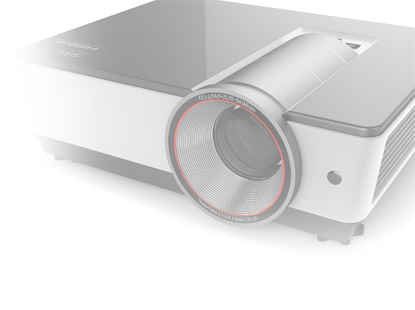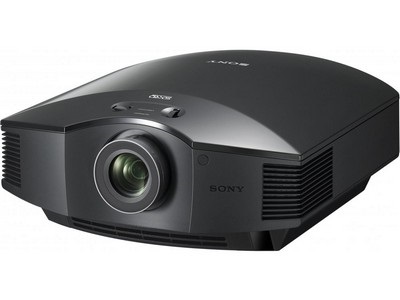

How to choose a 3D projector
In addition to 2D images, these models can project in 3D, providing a truly immersive home cinema or gaming experience.

Frequently asked questions when choosing a 3D projector
How are 3D projectors different from normal 2D projectors?
Unlike regular projectors, 3D projectors are able to project in 3D as well as 2D. They operate on a similar principle to 3D monitors, with the only difference being that the image is projected onto a screen or wall. 3D projectors can also convert 2D images to 3D.
3D projectors offer a more immersive experience than regular projectors, making them ideal for watching films or playing games.
What do I need to be able to enjoy 3D projections?
You will need a 3D projector and active 3D glasses, or two projectors and passive 3D glasses. As 3D projectors are able to convert 2D images into 3D, it isn't necessary to have all your content in 3D format.
What is the difference between DLP 3D and Nvidia 3D Vision?
DLP 3D projectors use DLP technology with 3D. In contrast, Nvidia 3D Vision is a gaming kit from Nvidia that consists of stereoscopic glasses and controllers that enable stereoscopic vision in any Direct3D games. The technology creates the illusion of depth by using multiple 2D images.
What is the difference between native and maximum image resolution?
Native resolution is often confused with maximum resolution. Maximum resolution is not the resolution of the projector but an indication of the highest possible resolution that the projector can convert to its native resolution. A film with a resolution higher than the maximum resolution of the projector cannot, therefore, be converted and displayed by the projector.
What is the difference between DLP and LCD technologies?
DLP projectors offer quality colour reproduction, high contrast, and low maintenance. One downside is the occasional presence of the so-called 'rainbow effect'. DLP projectors either have a halogen lamp (larger size and higher luminosity) or LEDs (lower power consumption and smaller dimensions).
LCD projectors provide excellent colour reproduction and high durability, but offer lower contrast than DLP projectors as well as higher maintentance.
What other devices can I connect to a 3D projector?
3D projectors can be connected to multiple devices via various cables or wireless technologies. .
- To connect to a notebook or PC - HDMI, DVI or VGA
- To connect to a games console - HDMI, component or composite connector
- To connect to a DVD / Blu-Ray or other players - HDMI, component or composite connector
TIP: Before buying, check what types of connection are supported by your device. If the projector has no common connector, use a reduction cable.
What else should I consider when choosing a 3D projector?


Luminous flux (luminosity)
Luminous flux is measured in lumens (lm) and indicates the brightness of the projected image. The darker the room, the less bright the projector needs to be.
Up to 2,000 lm - suitable for darkened rooms with minimal lighting.
2000-3 000 lm - more suited to dimly lit rooms.
Over 3,000 lm - provides highly visible projections, even in daylight.

Noise
Projectors creates a small amount of noise due to the fan that cools the projector body. The smaller the room, the more important it is to have a quieter projector. An acceptable level is up to 30 decibels.

Projection technology
DLP projectors offer quality colour reproduction, high contrast, and low maintenance. One downside is the occasional presence of the so-called 'rainbow effect'. DLP projectors either have a halogen lamp (larger size and higher luminosity) or LEDs (lower power consumption and smaller dimensions).
LCD projectors provide excellent colour reproduction and high durability, but offer lower contrast than DLP projectors as well as higher maintentance.

Useful functions and features
Remote control - for simple setup and operation of the projector from anywhere in the room.
Keystone correction - a function that corrects the output image if a projector is not placed perpendicular to the horizontal centerline of the screen (too high or too low).
Zoom - changes the image size without moving the projector.
PiP (Picture in Picture) - the projection of two images (video or photo) next to each other from two different sources.
Integrated battery - allows a projector to be used without mains electricity for several hours.
Built-in speaker - offers basic audio. Higher quality sound can be achieved by coupling the projector with a home theatre system.

Accessories
Glossary - Projectors
Keystone correction
Keystone correction is a function that corrects the output image if a projector is not placed perpendicular to the horizontal centreline of the screen (too high or too low).
FOV
FOV (Field of view) is the angle formed between your view and the projected image. The closer you are to the image and the longer the diagonal, the greater the angle, and vice versa.
PiP
Picture in Picture (PIP) means displaying two images (video or photo) from two different sources next to each other.
Glossary

Resolution and optimal viewing distance
Native resolution is based on the basic resolution of the image element (DMD chips for DLP projectors, LCD panels for LCD projectors). However, besides the basic resolution, projectors can display resolution lower or higher than native. In terms of quality, however, the picture will be worse, although this may not be visible to the human eye. The optimum viewing distance is derived from the native resolution; the closer you sit to the projector screen or wall, the higher the resolution should be. If the resolution is too low, the image quality will blur and pixelate.
Read about the difference between native and maximum projector resolution.